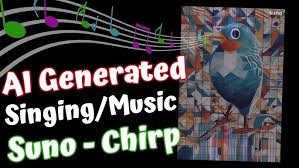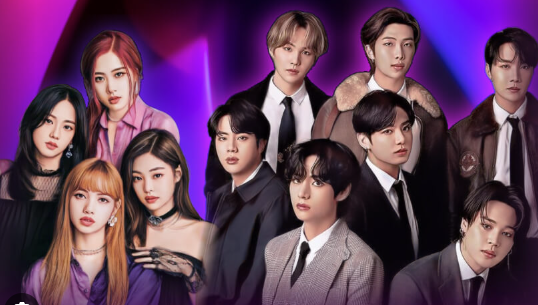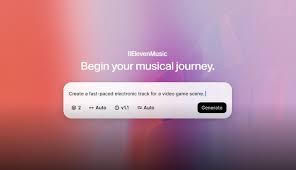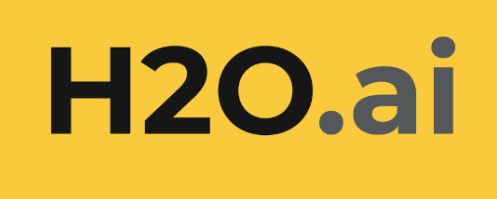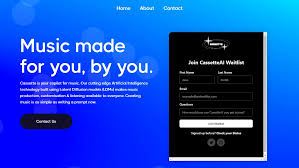Introduction: What Is MusicLM and Its Presence on Huggingface?
MusicLM, developed by Google, is a state-of-the-art AI model designed to generate high-quality music tracks from natural language prompts. It leverages advanced machine learning techniques to convert text descriptions into coherent and expressive audio compositions. Recently, the AI community has shown significant interest in MusicLM, particularly regarding its accessibility on platforms like Huggingface.
Huggingface, a leading hub for AI models and datasets, plays a pivotal role in democratizing access to cutting-edge technology. The availability of MusicLM or similar models on Huggingface enables developers, musicians, and enthusiasts to experiment with AI-driven music generation without the barriers of developing these complex models from scratch.
This article delves into the workings of MusicLM, its implementation on Huggingface, and practical considerations for users interested in AI-powered music creation.
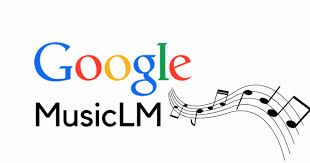
Understanding MusicLM: The Core of AI-Driven Music Generation
At its core, MusicLM is designed to translate textual descriptions into long-form, coherent music compositions. Google’s model employs a hierarchical generation process that starts with capturing the semantic essence of a prompt before generating detailed audio tokens.
The model’s two-stage process involves:
Semantic encoding: Interpreting the text input to understand mood, genre, tempo, and instrumentation.
Hierarchical audio synthesis: Using audio tokens to construct layered, realistic sound waves, incorporating instrumental nuances and rhythmic patterns.
Unlike traditional music generation models limited to MIDI outputs, MusicLM produces actual audio clips with rich textures and multiple instruments, ranging from classical orchestras to contemporary electronic beats.
MusicLM on Huggingface: Accessibility and Usage
Huggingface’s platform is well-known for hosting a variety of AI models, including those focused on natural language processing, vision, and audio generation. Although the original MusicLM model by Google has not been officially open-sourced, the AI community has developed similar text-to-music generation models inspired by MusicLM’s architecture and capabilities, which are available on Huggingface.
Users can explore these models to:
Generate music by providing textual prompts describing the desired style and mood.
Experiment with music lengths and complexity, subject to computational limits.
Fine-tune or customize models for specialized applications such as soundtrack creation or ambient music.
Huggingface provides easy-to-use APIs and web interfaces, enabling creators to generate music without deep technical expertise.
Practical Applications of MusicLM and Huggingface Models
Content Creation: Independent musicians and content creators can quickly generate background music for videos, podcasts, or games.
Prototyping Music Ideas: Composers can use AI to sketch initial ideas based on mood or theme prompts.
Personalized Music Experiences: Applications can generate tailor-made music for user preferences or specific contexts.
Educational Tools: Music students can analyze AI-generated music to study compositional techniques and styles.
Challenges and Considerations
Computational Resources: Generating high-fidelity music requires substantial GPU power, which can be costly or limited on free tiers.
Licensing and Copyright: Users must verify the licensing terms of AI-generated music, especially if using derivative models on Huggingface.
Model Limitations: Current AI models may sometimes produce repetitive or less dynamic outputs compared to human compositions.
Commercial Usage: While Huggingface models are accessible, some may restrict commercial use. Always check the model license carefully.
Step-by-Step: Getting Started with MusicLM-like Models on Huggingface
Create a Huggingface Account: Sign up to access the platform’s full capabilities.
Browse Music Generation Models: Search for keywords like "text-to-music" or "MusicLM" alternatives.
Test Models in the Browser: Use the demo interfaces to input text prompts and preview generated tracks.
Use the API: For developers, integrate music generation into apps via Huggingface’s API endpoints.
Download and Customize: Some models allow downloading checkpoints for local fine-tuning and experimentation.
Real User Insights and Statistics
According to Huggingface community data, music generation models inspired by MusicLM have been downloaded over 150,000 times as of mid-2025, indicating strong user interest. Feedback from users highlights ease of use and creative inspiration as major benefits, though computational cost remains a noted challenge.
FAQ
Q1: Is the original Google MusicLM model available on Huggingface?
No, Google has not open-sourced MusicLM. However, similar community models inspired by its architecture are available.
Q2: Can I use Huggingface’s music generation models commercially?
It depends on the specific model’s license. Always review the license details before commercial use.
Q3: How long can the generated music be?
Typical lengths vary from 20 seconds to a few minutes, constrained by model design and available resources.
Q4: Do these models generate vocals?
Most current models focus on instrumental tracks; vocals remain challenging for AI music generators.
Q5: What programming languages can I use with Huggingface’s API?
Huggingface supports multiple languages, with Python being the most popular for AI applications.
Conclusion: Embracing AI Music Creation with MusicLM-Inspired Models on Huggingface
MusicLM represents a transformative step in AI music generation, and while the original Google model is not publicly accessible, the Huggingface platform provides valuable alternatives inspired by its breakthrough technology. By leveraging these tools, creators can unlock new creative possibilities, experiment with innovative music styles, and integrate AI-generated soundscapes into various projects.
As AI models continue to evolve and become more accessible, the future of music creation looks increasingly collaborative between human creativity and artificial intelligence.
Learn more about AI MUSIC

